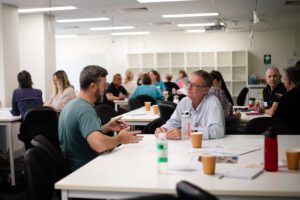Disaster Support: Tools & Resources
Here are tools and resources to support your service to plan for and respond to disasters.
Preparedness & Planning
Organisational planning
Mental Health Commission, NCOSS, University of Canberra: Community Resilience, Wellbeing and Recovery Project Guides | ||||
Organisations and groups of organisations can use these resources to define organisational capacity and roles and plan how they will work with government and large organisations disaster in disaster relief and recovery. Resources include:Guide for community-based organisationsThis guide assists local organisations to identify the roles they contribute to disaster recovery and resilience in their community and how to plan and prepare for these roles. This guide talks about common practical challenges local and non-local organisations experience as part of disaster recovery. | ||||
Guide for funders, large organisations and others seeking to enable and support local organisations in disaster recoveryThis guide is for funders, government agencies, large organisations and others seeking to enable and support local organisations in disaster recovery. |
| |||
| Workbook for community-based organisations This workbook was produced to be used alongside the Guide for community-based organisations. It contains seven worksheets local organisations can use to plan their role in disaster recovery processes.
| 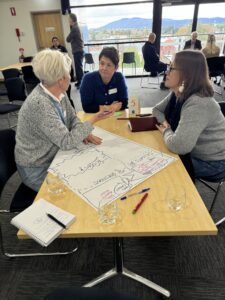 Bega Preparedness Workshop Bega Preparedness Workshop | |||
Justice Connect Disaster Legal ToolkitThe Disaster Legal Toolkit provides guidance to help your not-for-profit organisation navigate disaster-related legal questions and issues, like:
| ||||
| ||||
Wellbeing and Disasters
| Women’s Health Goulburn North East & Australia ReMade Care through Disaster resources to better set ourselves up to care and be cared for well, especially during times of deep disruption.
NCOSS also provides links to tools for supporting yourself and others after a disaster. | 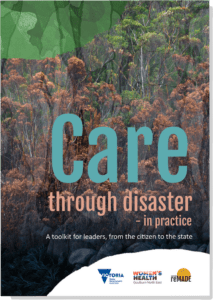 |
Preparing People
University of Sydney Collaborating 4 Inclusion provides useful preparedness training and resources:
Person-Centred Emergency Preparedness (P-CEP) is a University of Sydney Centre for Continuing Education Certificate Course
By completing the course you will:
- Apply the 4 P-CEP action steps to strengthen your own emergency preparedness.
- Develop knowledge, skills, and confidence to enable P-CEP with others.
- Connect and learn together with other stakeholders to advance P-CEP in your role and community context.
About the Course:
- 6 self-paced, online modules bring learners together to develop the knowledge and skills to facilitate P-CEP.
- Read, watch, listen, and reflect on learning through practical activity based discussions.
- Create an implementation plan.
- Join the P-CEP Connect Learning Community to support translation of learning into practice.
To gain access to the course, you need to complete an EOI. It is free and self-paced, and we take in a new group for the course each month.
In this webinar, you can hear about different types of providers have implemented P-CEP after taking the course: https://vimeo.com/796172191
ESDA - Emergency Sector Disability Awareness Online Modules are a 3-part introductory learning module for the emergency sector on disability inclusion in emergency management.
Part 1: Introduction to Disability for the Emergency Sector
Part 2: Introduction to Disability Advocacy for the Emergency Sector
Part 3: Introduction to Disability Representation for the Emergency Sector
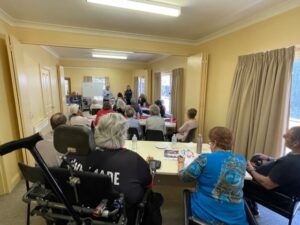 Monaro Family Support Service/Australian Red Cross preparedness session | Resources using the Person-Centred Emergency Preparedness approach |
Carers NSW Care2Prepare Disaster Readiness Resources
The Care2Prepare project has worked with older people, people living with a disability or chronic health condition and family and friend carers to co-design inclusive disaster preparedness tools for bush fire and flood.
Care2Prepare Household Readiness Toolkit
The Household Readiness Toolkit supports households to develop a plan that is based on the individual’s capability and capacity to plan, prepare and act during a disaster. Considering a person’s living situation, how they give and/or receive care and essential care routines and equipment, the resulting plan is tailored, easily understood and actionable.
One-on-one planning support
Participants in the Central Coast, Shoalhaven, and Gunnedah regions can register to join the Care2Prepare pilot program to create an individualised, person-centred.
Use the Care2Prepare tools
If you are a health or community sector organisation and want to use the Household Readiness Toolkit with your participants, Care2Prepare can provide facilitation training to upskill your staff in the delivery of supported disaster planning. To find out more contact the Care2Prepare team at care2prepare@carersnsw.org.au
Access these resources at Care2Prepare | Cares NSW
Australian Red Cross preparedness resources
Community-led Resilience Teams (CRTs) provide a way for community members to support each other and improve their capacity for disaster resilience. This guide is designed to assist community members and Red Cross volunteers working with communities to establish and develop their own CRTs. The guide includes:
Module 1 What is a Community-led Resilience Team?
Module 2 The Benefits of a Local Community-led Resilience Team
Module 3 Where to Begin – Seven Easy Steps
Module 4 Resources and Emergency Information
A selection of templates and resources used by CRTs
Red Cross Preparedness Resources, including the Red Cross RediPlan, a free disaster preparedness guide packed with helpful hints and clever strategies on how to prepare for disasters and make your emergency plan. The RediPlan and preparedness information is available in the following formats:
| Easy English RediPlan Preparedness for people with a chronic illness Preparedness for people with a physical disability | 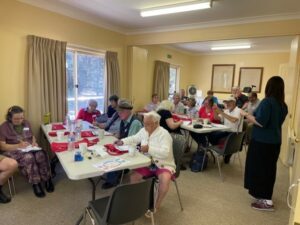 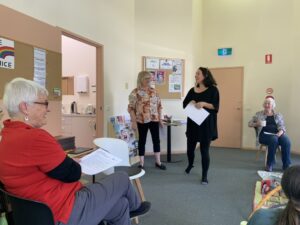 Preparedness sessions in Snowy Monaro |
Flagstaff’s EMBER program teaches individuals living with disability to prepare for bushfires and other natural disasters. Using simple language, formats and resources the program aims to support people with disability gain confidence in what to do when there is an emergency and to ensure they:
PLAN – Have an easy plan ready to guide them on what to do in case there is a natural emergency; and
ACT – If there is a bushfire, flood or other emergency – Take action and leave early.
A plan can be created using the EMBERapp
Streetmate is a neighbour support program. A Streetmate kit can be downloaded from the EMBER website Tools.
NSW Meals on Wheels A Collaborative Toolkit (ACT)
Resources for home support providers to empower older people to make decisions about preparing for emergencies, by building on their knowledge of local risks, initiating and supporting individual discussions around what they can do to prepare, providing concise, practical information and linking in appropriate supports.
Preparing Communities
Nimbin Neighbourhood & Information Centre has worked extensively with the local community and emergency services to develop:
- the Nimbin Emergency Radio Network (NERN)
- the Community Care Team (CCT)
- Nimbin Community Disaster Plan
Responding
NCOSS Disaster Assistance Resource pages are a quick reference for services supporting their communities through:
Emergency Volunteering is a NSW Government website providing information on volunteering with formal emergency agencies, management of spontaneous volunteers and current volunteering opportunities.
NCOSS Webinar: Human Rights-Based Approach in Disaster Reponses
This session explores a framework for applying a human rights-based approach in disaster risk reduction and capability-building.
It considers how disaster management is traditionally viewed and implemented and presents a complementary ‘Human Rights-Based Approach’ through the application of core ‘PANEL’ principles (Participation, Accountability, Non-Discrimination, Empowerment, Legality).
With a panel of speakers, the session also unpacks a self-assessment tool to explore the realities of translating principles into practice. Local and regional examples were discussed, allowing for reflection on key learnings in the aftermath of the 2019-2022 disasters (fires, pandemic and flooding) in New South Wales.
Recovery
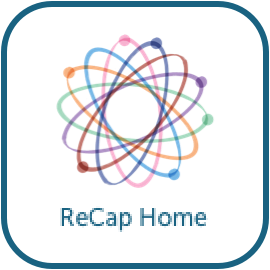 Disaster Recovery Planning using Recovery Capitals - a collaboration between the University of Melbourne, Massey University (Aotearoa), Australian Red Cross and the Bushfire and Natural Hazards CRC.
Disaster Recovery Planning using Recovery Capitals - a collaboration between the University of Melbourne, Massey University (Aotearoa), Australian Red Cross and the Bushfire and Natural Hazards CRC.
Organisations and groups of organisations can use this resource to define organisational capacity and roles against identified disaster recovery challenges. The resources can be used to plan recovery after a disaster or in pre-disaster recovery planning.
The Recovery Capitals (ReCap) Guide defines the seven Recovery Capitals:
- Social
- Political
- Natural
- Built
- Financial
- Human
- Cultural
The Guide explains the elements of, and considerations for, assessing each Capital when planning for recovery.
The Applying Recovery Capitals (ReCap) – Activities provides a number of activities to assist your organisation/s to:
- Map the capabilities/strengths of local NGOs against specific recovery challenges.
- Define the domains the NGO sector will work in and influence.
- Define optimal collaboration arrangements between communities, NGOs, local emergency services, state government and local councils.
Short Course: Foundations in Disaster RecoveryThe University of Melbourne Foundations in Disaster Recovery short course has been specifically designed for practitioners, volunteers and community members who are (or will be) working in post-disaster settings. The course has been written by leading disaster recovery researchers at the University of Melbourne and combines the rigour of academic research with a focus on practical application. This course is in a flexible format across five weeks with a combination of online and (optional) in-person learning. The content covered provides a foundation for disaster recovery practitioners, volunteers and community leaders who want to deepen their understanding of disaster recovery, how to consider disaster related impacts and how to access evidence-based materials to support practice. |
Podcast: After the DisasterThe After the Disaster Podcast was developed by the ABC, Australian Red Cross and the University of Melbourne. The podcast is for people who have been affected by disasters. In the podcast, host Kate Brady and guests provide easy to understand, reliable information from people with lived experience, and people who have professional experience. Each of the 15 episodes covers a different topic – ranging from how to support the kids in your life, managing the insurance issues, planning memorials and why disasters that come from acts of violence might feel different. |
Prevention & Mitigation
Hazards
- Local Government NSW YouTube video highlights the process of mapping using a Simtable (note: video contains bushfire imagery & footage)
- The Australian Institute for Disaster Resilience Disaster Mapper provides a simple way to look for disaster events that have occurred around Australia.
- Local Government NSW YouTube video Hawkesbury Disaster and Emergency Dashboard
Vulnerability
- Community Sector Disaster Capability Case Study_Mapping Vulnerability
Assets
- Infoxchange Service Seeker provides up-to-date information on health, welfare and community services across Australia.
Disaster Risks, Vulnerability, Assets (RiVA) Mapping Tool and Dashboard
In development - The Disaster Risks, Vulnerability, Assets (RiVA) Mapping Tool and Dashboard bring together social measures and hazards data to provide a unique tool for understanding disaster vulnerability and risk.
NCOSS economic disadvantage and hazards data is compiled by Yogi Vidyattama and Xuan-Binh (Benjamin) Vu, Faculty of Business, Government and Law, University of Canberra.
The NCOSS Disaster Support webpages are part of the Community Sector Disaster Capability Project. The Project, a partnership between NCOSS, AbSec and the Local Community Services Association (LCSA), was jointly funded by the Australian and NSW Governments under the National Partnership Agreement on Disaster Risk Reduction, through a Disaster Risk Reduction Fund grant. The CSDC Project was completed in June 2024.
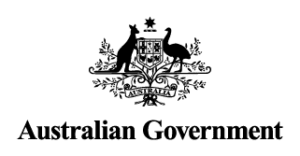 | 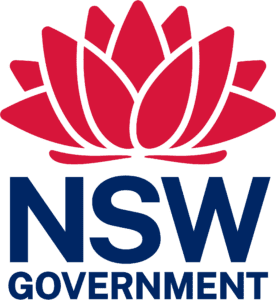 |  | 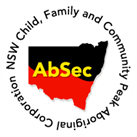 |

